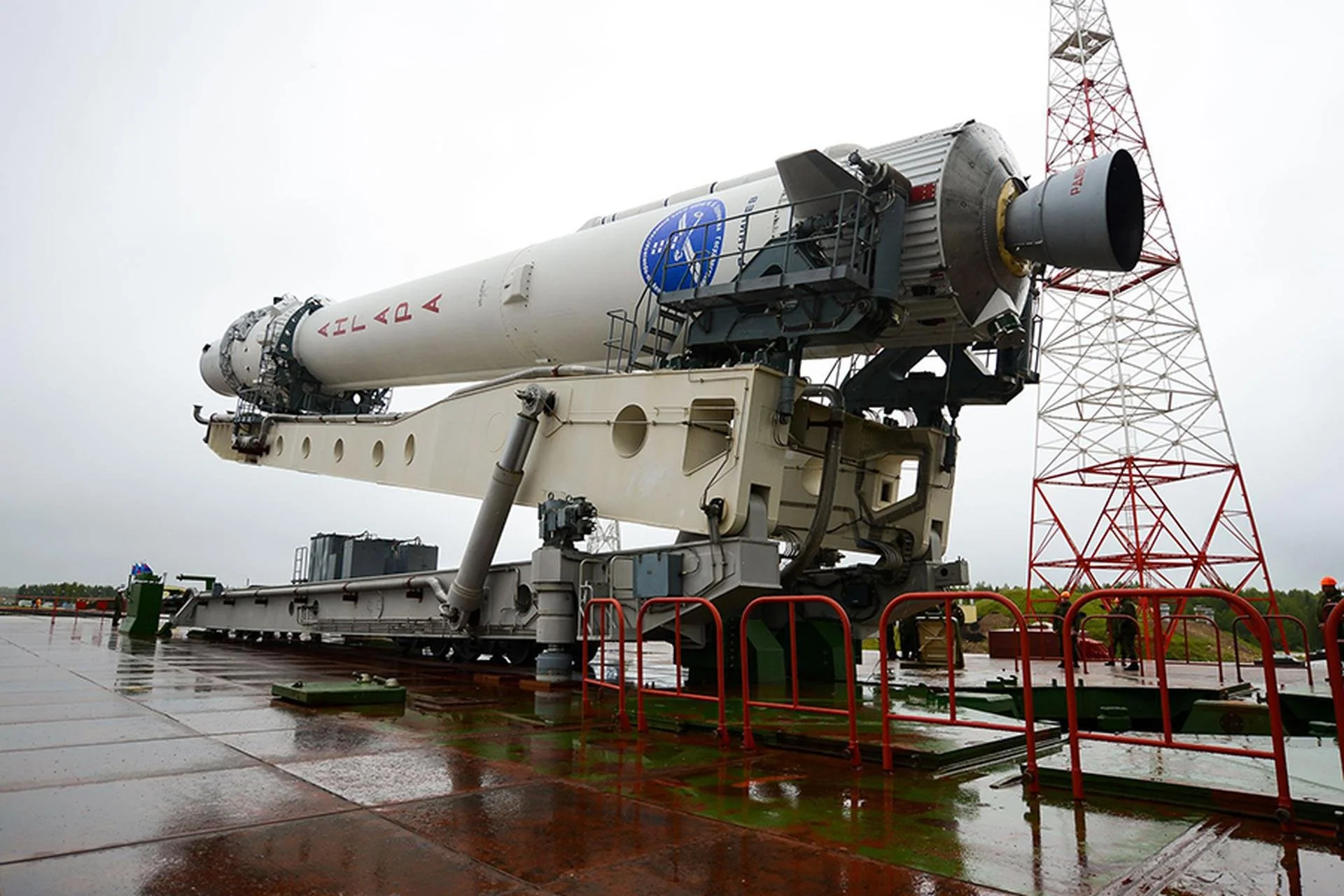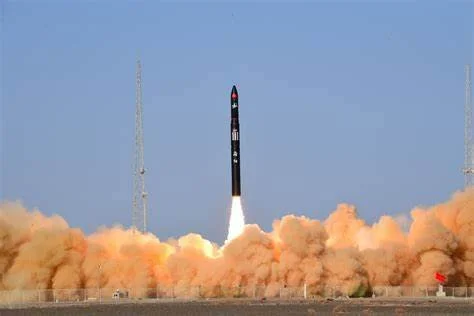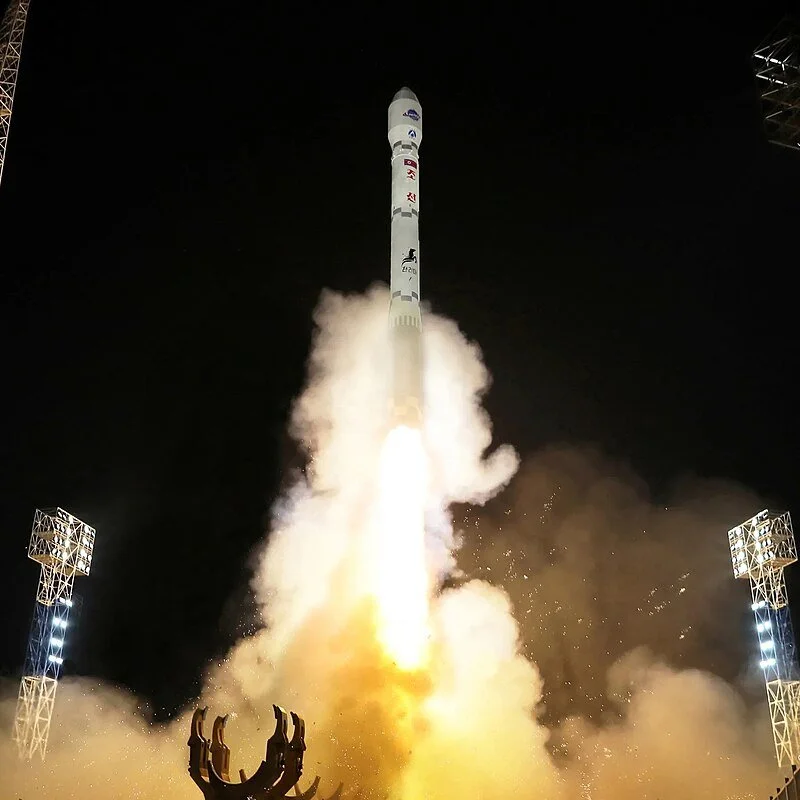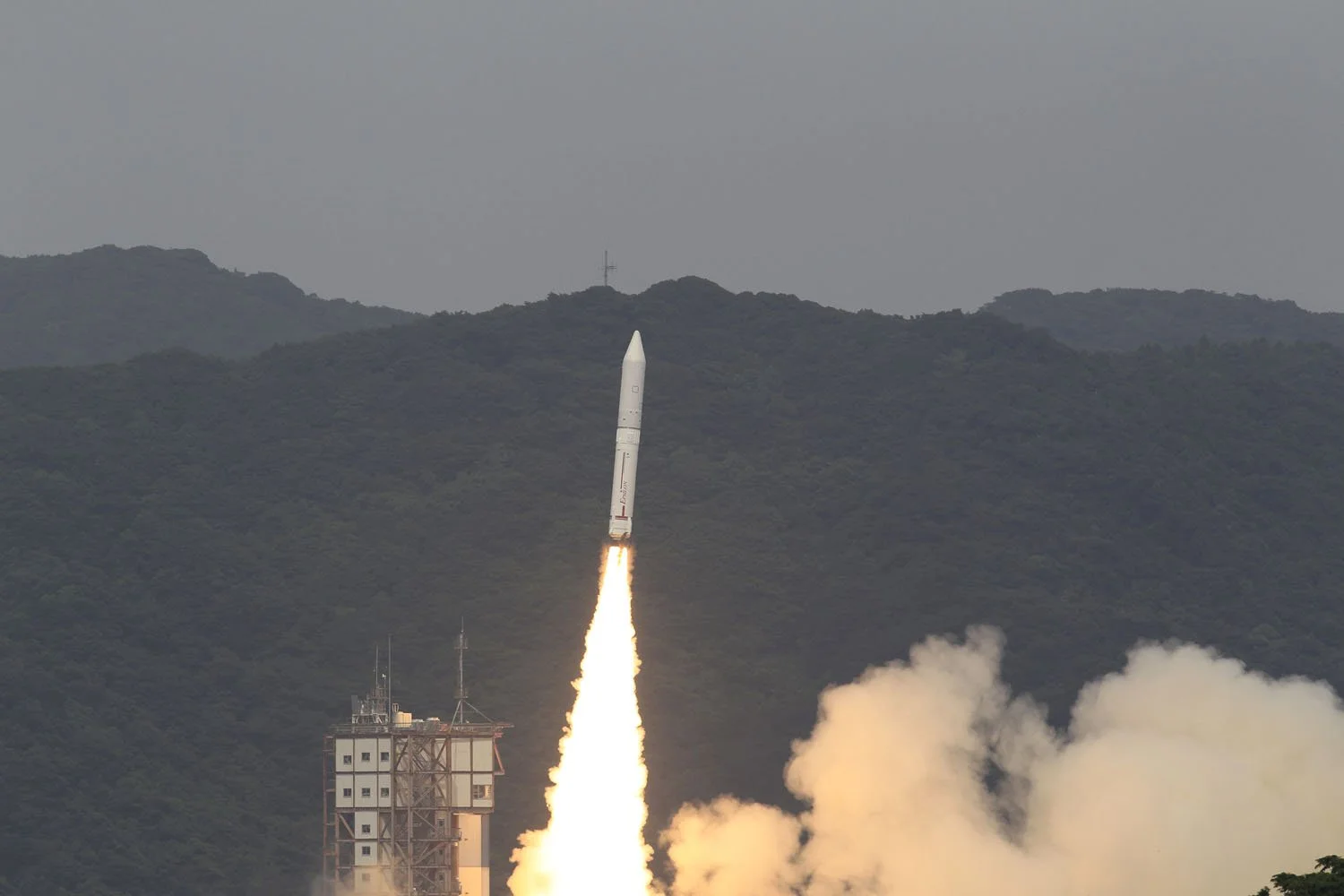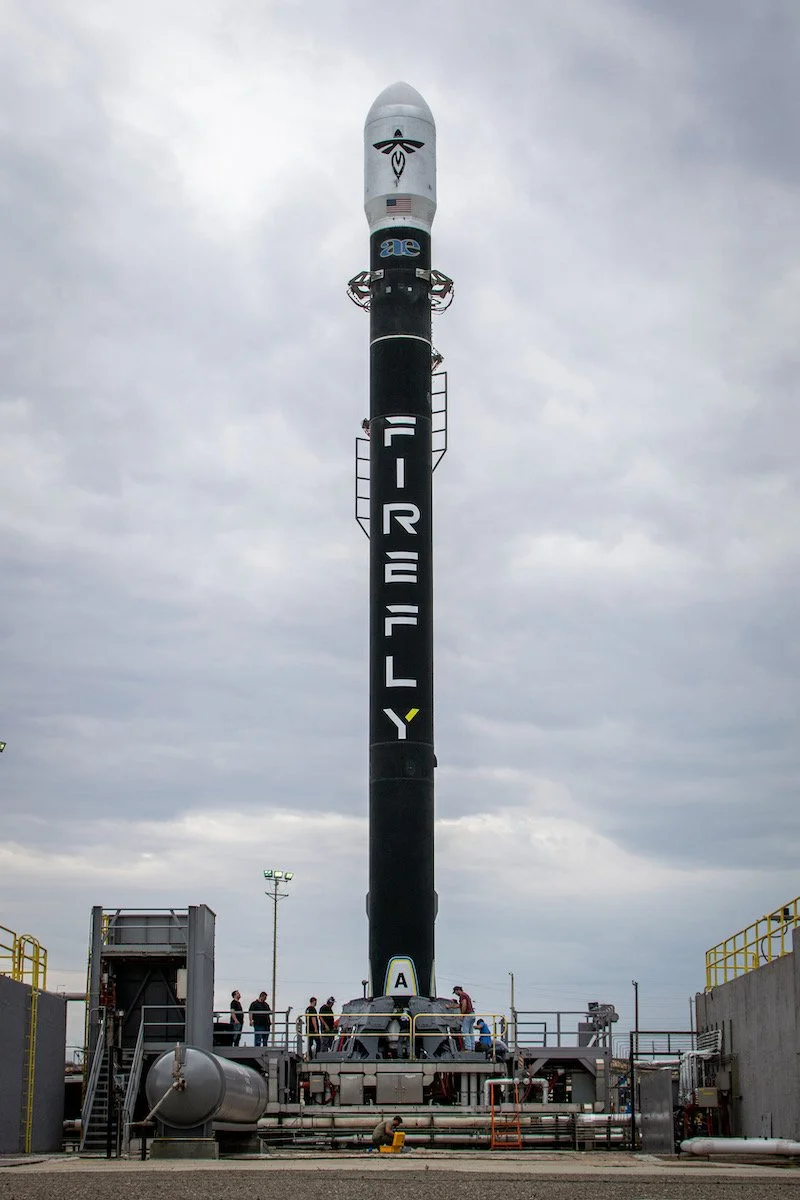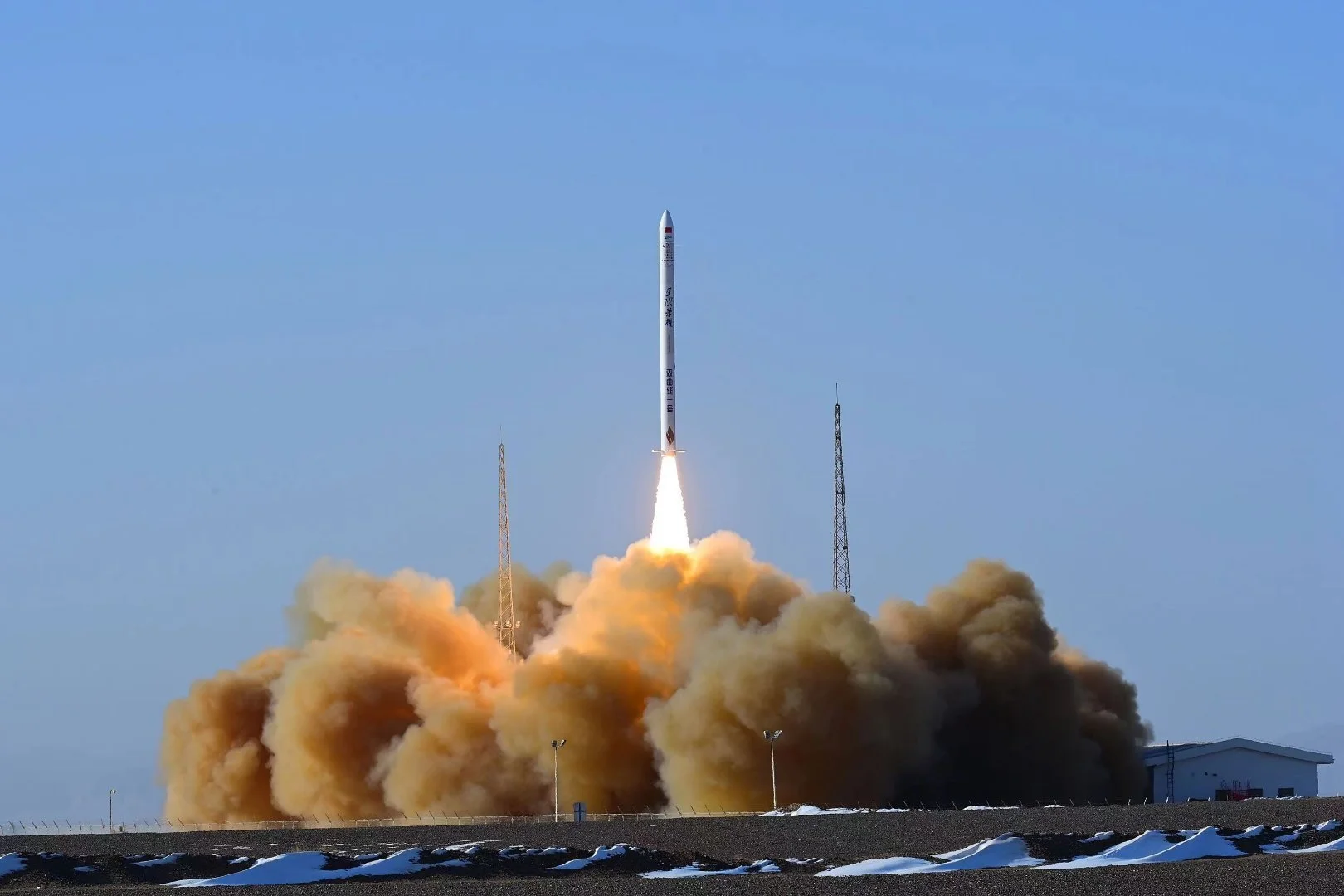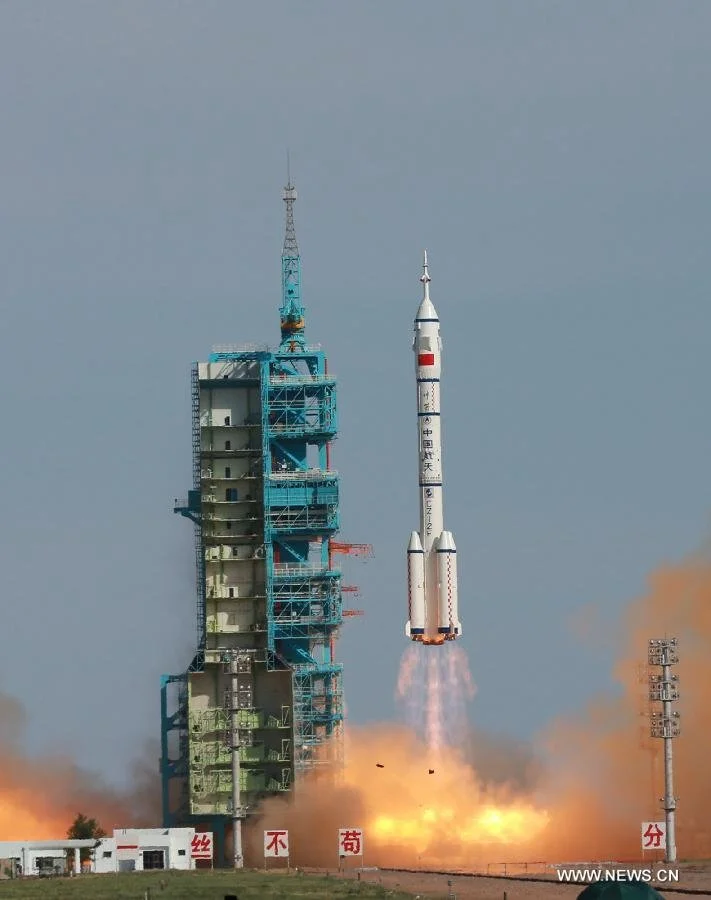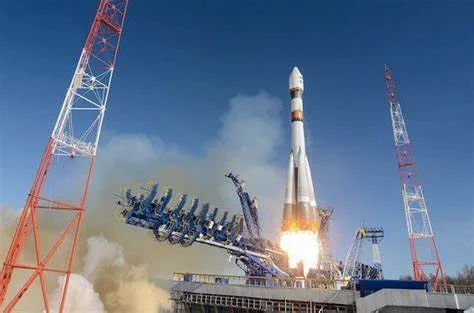Launch Vehicles
Angara-1.2
Angara-1.2 Khrunichev State Research and Production Space Centre RUSSIA
The Angara-1.2 is a 42.2 m (138 ft) tall, 2.9 m (9 ft 6 in) diameter, 171,500 kg (378,100 lb) two-stage launch vehicle. It can deliver:
LEO (200 km altitude):3,500 kg (7,700 lb)
SSO: 2,400 kg (5,300 lb)
LEO (1,500 km altitude): 1,600 kg (3,500 lb)
Current launch operations occur at Plesetsk Cosmodrome, Site 35, with Vostochny Cosmodrome planned for future missions.
Angara-1.2pp
Angara-1.2pp Khrunichev State Research and Production Space Centre RUSSIA
The Angara-1.2PP is a 40.4 m (132 ft) tall, 2.9 m (9 ft 6 in) diameter, ~181,700 kg two-stage launch vehicle used for sub-orbital test flights. It features a URM-1 first stage powered by an RD-191 engine and a URM-2 second stage with an RD-0124A engine.
Mission Type: Sub-orbital test flight
Launch Mass: ~181,700 kg
Stages: 2
First Launch Site: Plesetsk Cosmodrome, Site 35
The Angara-1.2PP was a one-time test configuration used in 2014 to validate the Angara launch system before operational flights of the Angara-1.2 and Angara A5
Angara-5
Angara-5 Khrunichev State Research and Production Space Centre RUSSIA
The Angara-A5 is a heavy-lift, five-module launch vehicle designed for geostationary, interplanetary, and high-altitude LEO missions. It stands 64.0 m (210 ft) tall, has a diameter of 8.86 m (29 ft) with boosters, and a launch mass of ~773,000 kg (1,704,000 lb). It consists of five URM-1 first-stage cores and a central URM-2 second stage, with an optional Briz-M or KVTK upper stage for extended missions.
LEO (200 km): 24,500 kg (54,000 lb)
SSO: 3,600 kg (7,900 lb)
GTO: 5,400 kg (11,900 lb) with Briz-M
8,000 kg (17,600 lb) with KVTK
TLI (Lunar Injection): 2,500 kg (5,500 lb) with KVTK
Current launch operations occur at Plesetsk Cosmodrome, Site 35, with Vostochny Cosmodrome planned for future missions.
Ariane 5
Ariane 5 Arianespace ESA
The Ariane 5 was a heavy-lift launch vehicle designed for geostationary, interplanetary, and human-rated missions. It stood 52 m (171 ft) tall, had a diameter of 5.4 m (18 ft), and a launch mass of ~780,000 kg (1,720,000 lb). It featured a cryogenic core stage (EPC) powered by the Vulcain 2 engine, two solid rocket boosters (EAPs), and an optional upper stage (ESCA or ES) for high-energy missions.
LEO (200 km altitude): 21,000 kg (46,300 lb)
GTO: 10,865 kg (23,960 lb) with dual payload configuration
TLI (Lunar Injection):~8,500 kg (18,740 lb)
Ariane 5 launched from Guiana Space Centre, Kourou, completing 117 missions between 1996 and 2023, before being succeeded by Ariane 6.
Ariane 6
Ariane 6 Arianespace ESA
The Ariane 6 is a next-generation heavy-lift launch vehicle designed to replace Ariane 5, offering modular configurations for diverse mission requirements. It stands 63 m (207 ft) tall, has a core stage diameter of 5.4 m (18 ft), and a launch mass of ~900,000 kg (1,984,000 lb). It features a liquid-fueled core stage (Vulcain 2.1 engine), with two or four solid rocket boosters (P120C), and a restartable Vinci upper stage for extended missions.
LEO (200 km altitude): 21,650 kg (47,750 lb) with A64
GTO: 10,350 kg (22,820 lb) with A64
4,500 kg (9,920 lb) with A62
SSO:5,000 kg (11,020 lb) with A62
7,600 kg (16,755 lb) with A64
Launches will take place from Guiana Space Centre, Kourou, with Ariane 6 expected to debut in 2024, enhancing Europe’s independent access to space.
Ceres-1
Ceres-1 Galactic Energy CHINA
The Ceres-1 is a small-lift, four-stage launch vehicle designed for commercial satellite launches. It stands 19 m (62 ft) tall, has a diameter of 1.4 m (4.6 ft), and a launch mass of ~33,000 kg (72,750 lb). The rocket consists of three solid-propellant stages and a liquid-fueled fourth stage for precise orbital insertion.
LEO (500 km altitude): 400 kg (880 lb)
SSO (500 km altitude): 350 kg (770 lb)
Ceres-1 operates from Jiuquan Satellite Launch Centre.
Chollima-1
Chollima-1 National Aerospace Technology Administration(NATA) NORTH KOREA
The Chollima-1 is a three-stage satellite launch vehicle developed by North Korea for deploying payloads into low Earth orbit (LEO). Estimates suggest it stands ~30 m (98 ft) tall, has a diameter of ~2.5 m (8.2 ft), and a launch mass exceeding 50,000 kg (110,000 lb). It features a liquid-fueled first and second stage, with a third stage likely using solid propulsion.
LEO: 200–300 kg (~440–660 lb)
The Chollima-1 is launched from Sohae Satellite Launching Station
Epsilon
Epsilon Japan Aerospace Exploration Agency (JAXA) JAPAN
The Epsilon is a solid-fueled, small-lift launch vehicle developed by JAXA for scientific and small satellite missions. The rocket stands 26.0 m (85 ft) tall, has a diameter of 2.5 m (8.2 ft), and a launch mass of ~95,000 kg (209,400 lb). It features three solid-propellant stages with an optional liquid-fueled fourth stage for precise orbital insertion.
LEO Payload Capacity: 1,500 kg (3,300 lb)
SSO Payload Capacity: 590 kg (1,300 lb)
Epsilon launches from the Uchinoura Space Centre. It has since been used for small satellite and scientific missions, with ongoing development of an upgraded Epsilon S variant for future operations.
Electron
Electron Rocket Lab NEW ZEALAND
The Electron is a small-lift, two-stage launch vehicle developed by Rocket Lab for dedicated small satellite launches. The rocket stands 18 m (59 ft) tall, has a diameter of 1.2 m (3.9 ft), and a launch mass of ~13,000 kg (28,660 lb). It is powered by nine Rutherford engines on the first stage and a single vacuum-optimized Rutherford engine on the second stage, both using RP-1/LOX propellants.
LEO Payload Capacity: 300 kg (660 lb)
SSO Payload Capacity: 200 kg (440 lb)
Electron launches from Launch Complex 1 (New Zealand) and Launch Complex 2 (Virginia, USA).
Falcon 9
Falcon 9 SpaceX USA
The Falcon 9 is a partially reusable, medium-to-heavy lift launch vehicle developed by SpaceX for commercial, government, and crewed space missions. It features a two-stage design, with a first stage capable of landing and reuse. The rocket stands 70 m (229.6 ft) tall, has a diameter of 3.7 m (12 ft), and a launch mass of ~549,000 kg (1,210,000 lb). It is powered by nine Merlin 1D engines on the first stage and a vacuum-optimized Merlin 1D on the second stage, both using RP-1/LOX propellants.
LEO Payload Capacity: 22,800 kg (50,265 lb)
GTO Payload Capacity: 8,300 kg (18,300 lb)
TLI (Lunar Injection): 4,000 kg (8,800 lb)
Mars Injection: ~4,020 kg (8,860 lb)
Falcon 9 launches from Cape Canaveral, Kennedy Space Center, and Vandenberg Space Force Base.
Falcon Heavy
Falcon Heavy SpaceX USA
The Falcon Heavy is a partially reusable, heavy-lift launch vehicle developed by SpaceX for high-mass payloads, deep-space missions, and crewed exploration. It consists of three Falcon 9 first-stage boosters strapped together. The rocket stands 70 m (229.6 ft) tall, has a diameter of 12.2 m (40 ft) including boosters, and a launch mass of ~1,420,788 kg (3,130,000 lb). It is powered by 27 Merlin 1D engines on the first stage and a single vacuum-optimized Merlin 1D on the second stage, using RP-1/LOX propellants.
LEO Payload Capacity: 63,800 kg (140,660 lb)
GTO Payload Capacity: 26,700 kg (58,860 lb)
TLI (Lunar Injection): 16,800 kg (37,000 lb)
Mars Injection: 16,800 kg (37,000 lb)
Falcon Heavy launches from Kennedy Space Center (Launch Complex 39A).
Alpha
Alpha Firefly Aerospace USA
The Alpha is a small-lift, two-stage launch vehicle developed by Firefly Aerospace for commercial and government satellite launches. The rocket stands 29.5 m (97 ft) tall, has a diameter of 1.8 m (5.9 ft), and a launch mass of ~54,000 kg (119,000 lb). It is powered by four Reaver 1 engines on the first stage and a single Lightning 1 engine on the second stage, both using RP-1/LOX propellants.
LEO Payload Capacity: 1,375 kg (3,030 lb)
SSO Payload Capacity: 1,000 kg (2,200 lb)
Alpha launches from Vandenberg Space Force Base (SLC-2W).
Hyperbola-1
Hyperbola-1 i-Space CHINA
The Hyperbola-1 is a small-lift, four-stage launch vehicle developed by i-Space, a Chinese private aerospace company, for commercial satellite launches. It stands 20.8 m (68 ft) tall, has a diameter of 1.4 m (4.6 ft), and a launch mass of ~31,000 kg (68,340 lb). The rocket consists of three solid-propellant stages and a liquid-fueled fourth stage for precise orbital maneuvers.
LEO (500 km altitude): 300 kg (660 lb)
SSO (500 km altitude): 260 kg (573 lb)
Hyperbola-1 launches from Jiuquan Satellite Launch Center.
Long March 2C
Long March 2C China National Space Administration (CNSA) CHINA
The Long March 2C (CZ-2C) is a medium-lift, two-stage launch vehicle developed by China Academy of Launch Vehicle Technology (CALT) and is Derived from the Dongfeng-5 ICBM. The rocket stands 42.0 m (138 ft) tall, has a diameter of 3.35 m (11 ft), and a launch mass of ~233,000 kg (513,700 lb). It is powered by two YF-21C engines on the first stage and one YF-24C engine cluster on the second stage, using UDMH/N₂O₄ propellants.
LEO Payload Capacity: 3,850 kg (8,490 lb)
SSO Payload Capacity: 1,400 kg (3,090 lb)
The Long March 2C launches from Xichang, Jiuquan, and Taiyuan Satellite Launch Centers.
Long March 2F
Long March 2F China National Space Administration (CNSA) CHINA
The Long March 2F (CZ-2F) is a human-rated, medium-lift launch vehicle developed by China Academy of Launch Vehicle Technology (CALT) for crewed Shenzhou missions and space station support. The rocket stands 62.0 m (203 ft) tall, has a core diameter of 3.35 m (11 ft), and a launch mass of ~497,000 kg (1,096,000 lb). It features four liquid-fueled boosters, a core first stage, and a restartable second stage, all using UDMH/N₂O₄ propellants.
LEO Payload Capacity: 8,400 kg (18,520 lb)
Primary Missions: Shenzhou crewed spacecraft
Tiangong space station support
The Long March 2F from the Jiuquan Satellite Launch Centre, supporting China’s human spaceflight program.
Long March 3 B/E
Long March 3 B/E China National Space Administration (CNSA) CHINA
The Long March 3B/E (CZ-3B/E) is an enhanced, heavy-lift launch vehicle developed by China Academy of Launch Vehicle Technology (CALT) for geostationary transfer orbit (GTO), lunar, and deep-space missions. The rocket stands 56.3 m (185 ft) tall, has a core diameter of 3.35 m (11 ft), and a launch mass of ~458,970 kg (1,011,900 lb). It consists of four liquid-fueled boosters, a core first stage, a hypergolic second stage, and a cryogenic third stage powered by liquid hydrogen (LH2) and liquid oxygen (LOX).
LEO Payload Capacity: 12,000 kg (26,460 lb)
GTO Payload Capacity: 5,500 kg (12,125 lb)
TLI (Lunar Injection): 3,900 kg (8,600 lb)
The Long March 3B/E operates from Xichang Satellite Launch Center.
Long March 3 C/E
Long March 3 C/E China National Space Administration (CNSA) CHINA
The Long March 3C/E (CZ-3C/E) is an enhanced, medium-to-heavy lift launch vehicle developed by China Academy of Launch Vehicle Technology (CALT) for geostationary, lunar, and interplanetary missions. It is a three-stage rocket with two liquid-fueled boosters. The E (Enhanced) version features increased payload capacity and structural improvements. The rocket stands 55.0 m (180 ft) tall, has a core diameter of 3.35 m (11 ft), and a launch mass of ~345,000 kg (760,600 lb). It consists of two YF-25 liquid boosters, a core first stage, a hypergolic second stage, and a cryogenic third stage using LH2/LOX.
LEO Payload Capacity: 8,500 kg (18,740 lb)
GTO Payload Capacity: 4,000 kg (8,820 lb)
TLI (Lunar Injection): 3,500 kg (7,720 lb)
The Long March 3C/E launches from Xichang Satellite Launch Centre.
Long March 5
Long March 5 China National Space Administration (CNSA) CHINA
The Long March 5 (CZ-5) features a modular design with two core stages and four liquid-fueled boosters. The rocket stands 57 m (187 ft) tall, has a core diameter of 5.0 m (16.4 ft), and a launch mass of ~867,000 kg (1,912,000 lb). It is powered by YF-100 and YF-77 engines, using RP-1/LOX for boosters and LH2/LOX for core stages.
LEO Payload Capacity: 25,000 kg (55,100 lb)
GTO Payload Capacity: 14,000 kg (30,860 lb)
TLI (Lunar Injection): 8,200 kg (18,080 lb)
Mars Injection: 5,000 kg (11,000 lb)
The Long March 5 launches from Wenchang Space Launch Site.
Soyuz 2.1a
Soyuz 2.1a Roscosmos RUSSIA
The Soyuz 2.1a is a medium-lift, three-stage launch vehicle developed by TsSKB-Progress and operated by Roscosmos for crew, cargo, and satellite missions. The rocket stands 46.3 m (152 ft) tall, has a core diameter of 2.95 m (9.7 ft), and a launch mass of ~312,000 kg (687,800 lb). It is powered by four RD-107A booster engines, a core RD-108A engine, and a RD-0110 third-stage engine, all using RP-1/LOX propellants.
LEO Payload Capacity: 7,020 kg (15,480 lb)
SSO Payload Capacity: 4,500 kg (9,920 lb)
GTO Payload Capacity: 3,250 kg (7,165 lb) with Fregat upper stage
Soyuz 2.1a launches from Baikonur Cosmodrome, Vostochny Cosmodrome, and Plesetsk Cosmodrome.
Tianlong-2
Tianlong-2 Space Pioneer CHINA
The Tianlong-2 is a medium-lift, two-stage launch vehicle developed by Space Pioneer, a Chinese private aerospace company. It utilizies kerosene and liquid oxygen (RP-1/LOX) propellants. The rocket stands 32.8 m (107.6 ft) tall, has a diameter of 3.35 m (11 ft), and a launch mass of ~150,000 kg (330,700 lb). It is powered by three Tianhuo-12 engines on the first stage and a single vacuum-optimized Tianhuo-12 engine on the second stage.
LEO Payload Capacity: 2,000 kg (4,400 lb)
SSO Payload Capacity: 1,500 kg (3,300 lb)
Tianlong-2 launches from Jiuquan Satellite Launch Centre.

